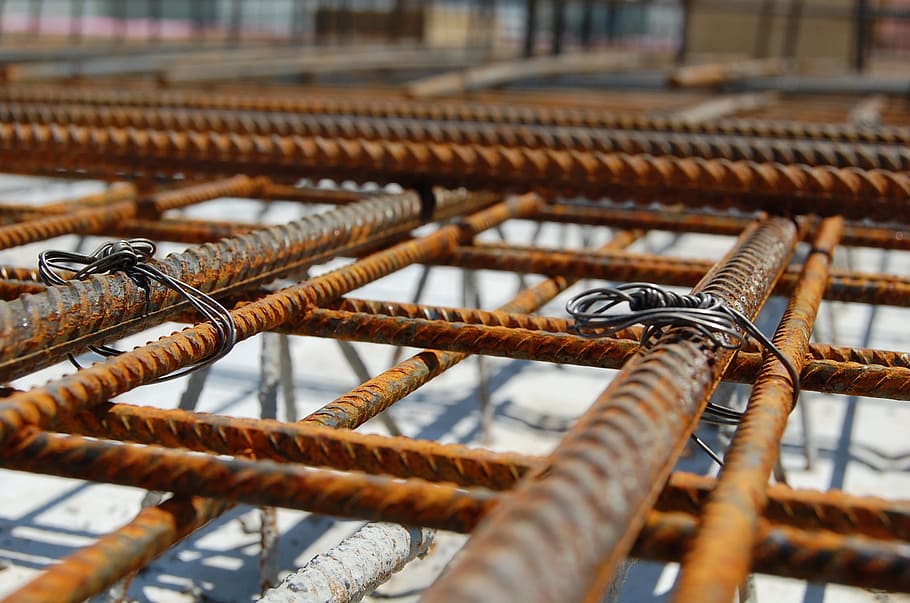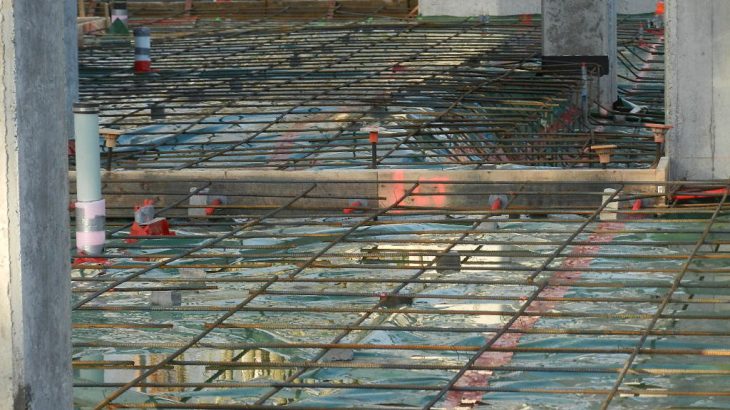A bit of history
Reinforced concrete allows the construction of solid and stable structures. The patent of reinforced concrete was registered in 1867 by Joseph Monier, a French gardener who was not satisfied with the materials available for making flowerpots. The vital point of Monier’s idea was that it combined steel and concrete in such a way that the best qualities of each material were brought into play. The first reinforced concrete construction is a Parisian building that was built in 1900. In 1885 German engineer Gustav Adolf Wayss (1851–1917) bought Monier’s patent and developed it further. He conducted further research using reinforced concrete as a building material and established several construction companies for reinforced concrete (the most famous are Wayss & Freytag and Beton- und Monierbau AG).
There are different types of concrete walls:
– in concrete blocks: cinder block or cellular concrete,
– in prefabricated concrete,
– or in reinforced concrete.
Reinforced concrete: a metal structure
Reinforced concrete is made from concrete encasing a steel reinforcement.
Vertical reinforced concrete load-bearing elements include columns and walls that support floors and beams. Vertical reinforced carriers include solid slabs and slab-on-grade floors. Concrete is resistant to compression, but it is less resistant to traction, which is why reinforcement is used to strengthen the sensitive areas of the construction. The fact of reinforcing concrete reduces the risk of cracking.
Reinforced concrete: properties

Concrete is resistant to compression ( 25 to 45 MPa) but much less traction ( ≈ 2 to 3 Mpa). This is why steel reinforcement resistance to both compression and tension reinforces sensitive areas of construction. Concrete balances the compressive forces in the tight spots of the structures, while steel mainly balances the tensile forces in the tensile areas of the structures.
Moreover, concrete has a lower elongation capacity since it corresponds to 1/10° of mm per meter before cracking. In contrast, steel reinforcement has a higher elongation capacity: 250 mm per round meter and 140 mm for high bonds. Finally, as reinforcement is easily oxidized, it is protected by the concrete from external aggressions (salt).
Reinforced concrete: reinforcing bars
For reinforced concrete, steel bars of 6 m in length are used in different diameters: 4 to 40 mm.
These bars can be shaped and have various reliefs according to the type of reinforcement to be made. There are two types of bars: smooth round steel bars and high adhesion bars.
Assembly of reinforcing bars: welding or tying
The bars are assembled either by ligature or by welding:
REINFORCED CONCRETE: ASSEMBLY OF THE STEEL STRUCTURE
|
WELDING |
|
|
It allows moving the reinforcement without risk of disassembling during the transport and the pouring of the concrete. |
– Made with annealed steel wires, the irons are laid out and then tied on site. – Ligatures must imperatively be towards the inside of the reinforcement. |
Reinforced concrete: placing of reinforcing bars
The reinforcing bars are:
– placed in a formwork,
– or slid into concrete blocks designed for this purpose.
The reinforcing bars must be perfectly positioned; the use of prefabricated reinforcing bars facilitates this positioning.
If the reinforcement touches the formwork or is too close to it, it will cause rust stains on the surface or even a splintering of the concrete, which is linked to the oxidation of the steel bars, which will increase the volume of the bar and cause the concrete to splinter or even break. You can use plastic wedges or spacers: the embedding is generally of 3 cm minimum.
Prefabricated reinforcement for reinforced concrete
These prefabricated reinforcements are welded in a factory and sold in 6 m length.
They allow masonry works, for example, the ties that ensure the stability of a structure by linking two walls together.
Reinforced concrete price: on estimate only
You cannot calculate the price of concrete per m².
It depends on many parameters:
– project,
– surface,
– displacement,
– accessibility, etc.
It is advisable to get several detailed estimates with a description of the work to be done and a costing to estimate the cost of your work.



















